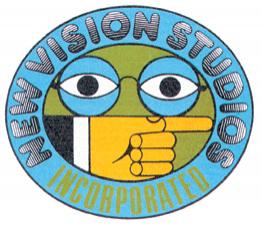I was flying into the unknown.
Somewhere over the Pacific Ocean, between the life I had lived as an architect in Montreal and a new path that would take me to Singapore, my world was forever changing. In the split from everything I knew, the imaginings of a future I thought I had all mapped out were held in a vapor trail, until it was all finally swept away, leaving a chalk-white smudge across the blue sky.
A distant city in Southeast Asia and a job as the director of the visual merchandising program at LaSalle International Fashion School in 1994 would be the melting pot into which I would pour my love of teaching, art, theatre, architecture and design, and learn about display, merchandising and retail design (and why I had hated shopping for years prior).
I devoured everything I could read, and walked through store after store as I learned about what made great shopping places. I connected to leaders in the store design world in the U.S., canvassing for their opinions about trends when I had to do a speech at a conference put on by Retail Asia Magazine, as well as setting up relationships for my eventual return a year later.
When landing in New York I was fortunate to meet industry icons Tom Beebe, Peter Glen, Gene Moore and Joe Weishar.
Meeting Joe was an accident. An accident that would prove to be the most profound learning experience along my newly selected career path, and it almost didn’t happen.
Advertisement
I had all but written him off since he didn’t respond to my faxes asking him questions about VM trends. But Joe Siegal, then the vp of merchandising at the NRF, suggested I give Weishar a phone call since he might be looking for a designer at New Vision Studios.
Within a day or so of my self-imposed deadline to find a job in New York, Joe hired me to join his staff of three. I became the resident architect among a talented group of visual merchandisers. The next four years set the stage for my 20-year future in the retail design profession.
I had read Joe Weishar’s book “Design for Effective Selling Space” while in Singapore. In it, he tied together the fundamentals of composition and design, visual perception and visual presentation. Under his tutelage in a small studio on 36th Street in New York, I learned how to think like a merchant and see like a customer. My rather inflated impression of architects and how design was king was soon replaced by the understanding that the merchandise was the star, and the store was only a stage set upon which a story was being told.
We traveled the world, from Istanbul to Bangkok, working with retailers to help them understand what was driving customer behavior in their stores. Joe drew from a deep knowledge of art fundamentals and applied them to merchandise presentation. Point. Line. Plane. Focal points. Value contrasts. Color theory. Composition. Everything I had been teaching to students from my previous years in Montreal and Singapore was now being applied to the art of visual presentation.
I learned that visual merchandisers were much more than window trimmers and display artists. I began to see them as 3-D storytellers whose palette was product. Joe brought a respect to the role of the visual department. He elevated them from the basement into the C-Suite.
Through Weishar I learned that it wasn’t all about me, the architect, whose design would enthrall customers and generate sales. If the product was awful and its presentation even worse, as a merchant, you were fighting an uphill battle. On the other hand, I also learned that you could basically sell anything off of milk crates if the presentation was full of wit, whimsy and wonder. When I saw Urban Outfitters actually selling off of milk crates years later in Montreal, I stopped with a smile, saying to myself, “If only Joe could see this…”
Advertisement
After merchandising thousands of square feet of retail space, stripping down departments, pushing fixtures around, setting presentations, folding clothing and focusing lighting, I was learning, through Joe, how to approach retail design with new eyes.
The troubling disconnect between the buying office and the sales floor was becoming clearer and a sense of empathy for the visual team trying to make magic from merchandise mayhem was building in me. I never again looked at a table, wall or sign the same way. They were no longer simply objects in space but vehicles to connect to customers whose primary function was about selling.
Joe was a teacher. He believed in the empowerment of sales associates by having them learn about the tenets of effective merchandising practice. He had faith that with the right knowledge, sales associates would bring their inherent creativity to the sales floor and merchandise presentations.
He was also an artist, never without a pen in one hand and sketchbook cradled in the other. His tools of choice were pen, ink and watercolor. His ability to capture the essence of a scene in a gestural scrawl was extraordinary. He loved finely crafted fountain pens, hunting for them on our trips abroad. With our colleague George Homer (a talented visual merchandiser, educator and store designer in his own right, who was hired by Joe out of Brazil some years earlier) we walked the grand bazaar in Istanbul and the crowded fish markets in Thailand. We ate, drank and smoked a good cigar in places that hold lasting impressions in my early days of retail design.
Joe used to refer to us as “merchant designers” which, as a young architect in the profession, I was too wet behind the ears to want to accept or really understand. Working for Joe wasn’t always easy, but then good lessons are often hard. When I fought for things I thought were right, though different in points of view, Joe was gracious, probably seeing me as the mostly eager and sometimes impetuous retail designer neophyte with a passionate vision. He let me run, and stumble.
When I came to New York I thought I wanted a job in a big bustling design office. As the Rolling Stones song goes, “You can’t always get what you want, but you get what you need…” While I may not have fully appreciated it some 20 years ago, Joe Weishar was exactly what I needed to launch a career in the retail world. In the years since, I have realized how fortunate I was to have known him on my path.
Advertisement
Joe Weishar passed away at age 83 on December 25, 2015, leaving a lasting impression on me and a countless others in the retail industry.
Thank you, Joe.
David Kepron is the creative director of Little’s Brand Experience Studio and author of “Retail (r)Evolution: Why Creating Right-Brain Stores will Shape the Future of Shopping in a Digitally Driven World,” published by ST Media Group Intl. and available online from ST Books. His retail design work focuses on the creation of relevant shopping experiences at the intersection of architecture, sociology, neuroscience and emerging digital technologies. @davidkepron; www.retail-r-evolution.com; www.littleonline.com


 Photo Gallery1 week ago
Photo Gallery1 week ago
 Headlines3 days ago
Headlines3 days ago
 Headlines1 week ago
Headlines1 week ago
 Headlines1 week ago
Headlines1 week ago
 Designer Dozen2 weeks ago
Designer Dozen2 weeks ago
 Headlines1 week ago
Headlines1 week ago
 Designer Dozen6 days ago
Designer Dozen6 days ago
 Headlines1 week ago
Headlines1 week ago



















